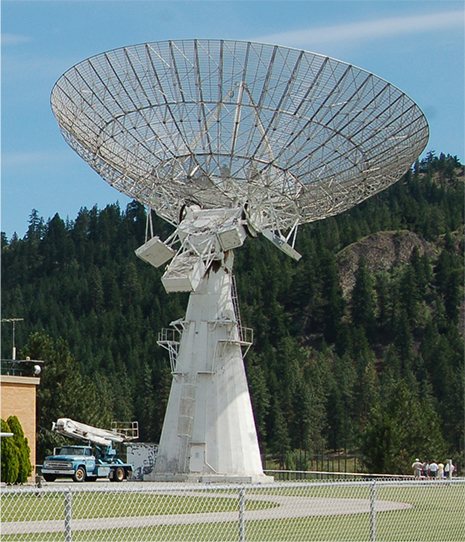| << Chapter < Page | Chapter >> Page > |
A monochromatic light of unknown wavelength is incident on a slit of width . A diffraction pattern is seen at a screen 2.5 m away where the central maximum is spread over a distance of 10.0 cm. Find the wavelength.
A source of light having two wavelengths 550 nm and 600 nm of equal intensity is incident on a slit of width . Find the separation of the bright spots of the two wavelengths on a screen 30.0 cm away.
0.98 cm
A single slit of width 2100 nm is illuminated normally by a wave of wavelength 632.8 nm. Find the phase difference between waves from the top and one third from the bottom of the slit to a point on a screen at a horizontal distance of 2.0 m and vertical distance of 10.0 cm from the center.
A single slit of width is illuminated by a sodium yellow light of wavelength 589 nm. Find the intensity at a angle to the axis in terms of the intensity of the central maximum.
A single slit of width 0.10 mm is illuminated by a mercury lamp of wavelength 576 nm. Find the intensity at a angle to the axis in terms of the intensity of the central maximum.
A diffraction grating produces a second maximum that is 89.7 cm from the central maximum on a screen 2.0 m away. If the grating has 600 lines per centimeter, what is the wavelength of the light that produces the diffraction pattern?
340 nm
A grating with 4000 lines per centimeter is used to diffract light that contains all wavelengths between 400 and 650 nm. How wide is the first-order spectrum on a screen 3.0 m from the grating?
A diffraction grating with 2000 lines per centimeter is used to measure the wavelengths emitted by a hydrogen gas discharge tube. (a) At what angles will you find the maxima of the two first-order blue lines of wavelengths 410 and 434 nm? (b) The maxima of two other first-order lines are found at and . What are the wavelengths of these lines?
a. 0.082 rad and 0.087 rad; b. 480 nm and 660 nm
For white light falling normally on a diffraction grating, show that the second and third-order spectra overlap no matter what the grating constant d is.
How many complete orders of the visible spectrum can be produced with a diffraction grating that contains 5000 lines per centimeter?
two orders
Two lamps producing light of wavelength 589 nm are fixed 1.0 m apart on a wooden plank. What is the maximum distance an observer can be and still resolve the lamps as two separate sources of light, if the resolution is affected solely by the diffraction of light entering the eye? Assume light enters the eye through a pupil of diameter 4.5 mm.
On a bright clear day, you are at the top of a mountain and looking at a city 12 km away. There are two tall towers 20.0 m apart in the city. Can your eye resolve the two towers if the diameter of the pupil is 4.0 mm? If not, what should be the minimum magnification power of the telescope needed to resolve the two towers? In your calculations use 550 nm for the wavelength of the light.
yes and N/A
Radio telescopes are telescopes used for the detection of radio emission from space. Because radio waves have much longer wavelengths than visible light, the diameter of a radio telescope must be very large to provide good resolution. For example, the radio telescope in Penticton, BC in Canada, has a diameter of 26 m and can be operated at frequencies as high as 6.6 GHz. (a) What is the wavelength corresponding to this frequency? (b) What is the angular separation of two radio sources that can be resolved by this telescope? (c) Compare the telescope’s resolution with the angular size of the moon.


Notification Switch
Would you like to follow the 'University physics volume 3' conversation and receive update notifications?